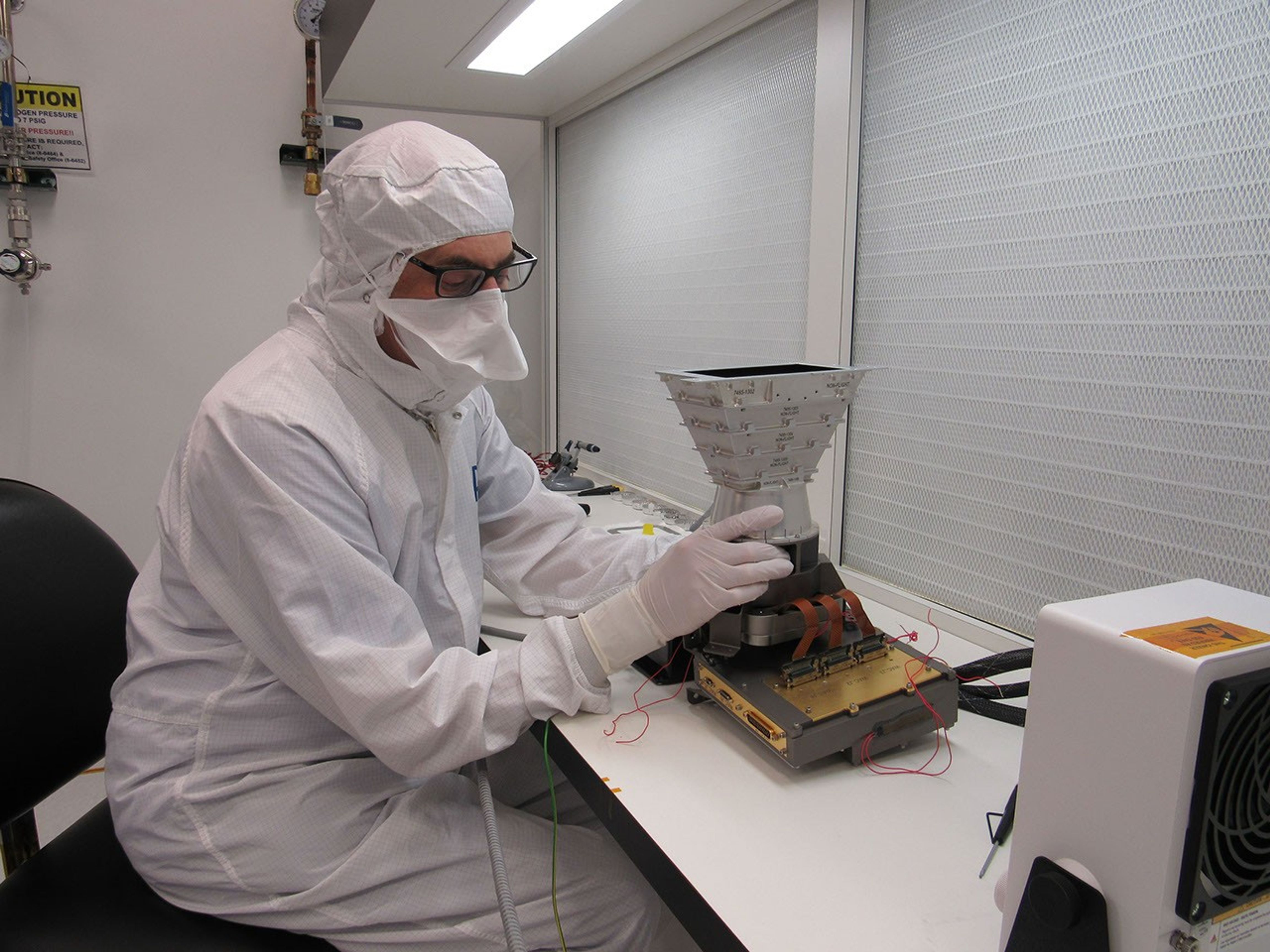Description
A mechanical engineer in a clean room at the Johns Hopkins Applied Physics Laboratory (APL) in Laurel, Maryland, installs the detector electronics for the engineering model of the Wide Angle Camera (WAC), one of two cameras that make up the Europa Imaging System (EIS). EIS is one of the science instruments that will fly aboard NASA's Europa Clipper.
EIS data will offer fresh insights into Europa's geological structure and processes and will be used to search for evidence of recent or current geologic activity, including potential erupting plumes.
With an internal global ocean twice the size of Earth's oceans combined, Europa may have the potential to harbor life. NASA's Europa Clipper spacecraft will swoop around Jupiter on an elliptical path, dipping close to the moon on each flyby to collect data. Understanding Europa's habitability will help scientists better understand how life developed on Earth and the potential for finding life beyond our planet. Europa Clipper is aiming for a launch readiness date of 2024.
More information about Europa and Europa Clipper can be found here: europa.nasa.gov.
































